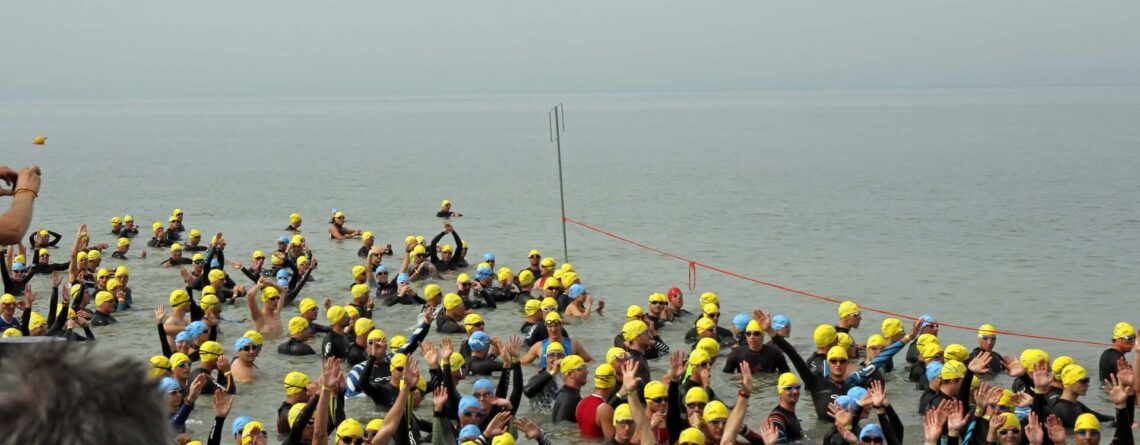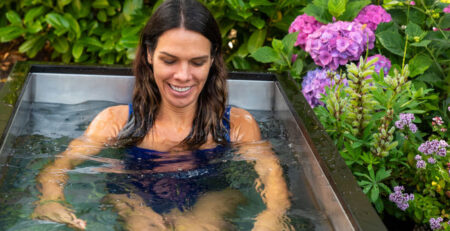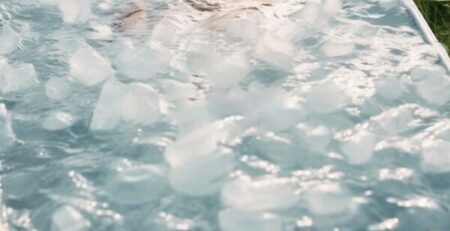Cold water swimming takes many forms. Two of the most common terms are cold plunging (ice bathing) and winter or ice swimming, and while they sound similar, they are not the same.
Cold plunging is about brief, motionless exposure to cold water, often for recovery and health benefits.
Cold water swimming (ice/ winter swimming), on the other hand, is a sport. It is about swimming as fast as possible in water as cold as 5°C. There is no thermal protection; just a swimsuit, cap, and goggles. It’s not about relaxation, but about pushing your limits.
Table of Contents
The Drive for Records
Cold water swimming has grown into a competitive sport with official associations and world championships.
The most prominent organizations include:
- IISA (International Ice Swimming Association)
- IWSA (International Winter Swimming Association).
- WOWSA (World Open Water Swimming Association)
According to participants, the IISA and IWSA have different regulations, and there are also some events. For example, the 6th Ice Swimming World Championships took place in Molveno, Italy, from January 13 to 29, 2025. Germany’s Christof Wandratsch (nicknamed Mister Ice Swimming) is a multiple world champion who swims official distances such as the 1,000m race and the “ice mile” (1,609m).
The longest cold water swimming record was set by Krzysztof Kubiak from Poland. The distance was 4.7 kilometers, which was completed in 1 hour and 28 minutes. The water temperature on April 3, 2022, when the distance was covered, was a cool 3.87°C on average – an absoswimming temperature. This record, documented by IISA, demonstrates the extreme physical and mental endurance required.
Why Is Winter Cold Water Swimming So Challenging?
Unlike ice swimming, where you can exit at any time (like after a sauna or a short, quiet dip in the ice tub), winter swimming demands constant movement. The challenges include:
- Colder perception: No warm layer of water can form around your skin to shield you from the colder layers; instead, you are permanently surrounded by water of the same temperature.
- No easy escape: You have to swim; otherwise, you will sink. When ice swimming, you always have the option of a quick exit if it gets too cold or uncomfortable. When ice swimming, you have to estimate the distance a little better because, depending on the location, you can’t just get to the edge of the pool and get out, but may still be a few minutes away from the shore. That alone can cause panic.
- Endurance required: It’s not about dipping in; it’s about maintaining speed and rhythm in near-freezing water.
Ice-Cold Water Swimming as a Popular Sport
In Nordic countries such as Estonia, Latvia, Lithuania, Finland, Sweden, and Russia, ice-cold water swimming is firmly rooted in the sports culture.
The Ice Swimming World Championships were held in Rovaniemi (Finland) in 2014 with over 1,200 participants from many different countries.
Typically, distances of between 25 and 1,000 meters are completed in ice-cold water. And of course it’s not about splashing around, but about speed.
Even during recent years, despite pandemic cancellations, major events such as Burghausen’s Wöhrsee competition remain highlights for hundreds of athletes.
Experiences of a Winter Cold Water Swimmer
You are usually alone when you go winter swimming. Few athletes take part, and training typically happens alone. Yet, its rewards are powerful:
- Minimal equipment – All you need is a safety buoy, a swimming cap, and an optional pair of swimming shoes.
- Time-efficient: Sessions last only 10–15 minutes in near-freezing water.
- Health benefits: Cold water swimming rapidly boosts circulation, accelerates fat burning, and sharpens mental clarity.
A beautiful feeling of lightness, euphoria, and pleasant tiredness set in automatically after cold water swimming. Many cold water swimmers actually report improvement in sleep after immersing in the cold. You will sleep like a baby!
Frequently Asked Questions (FAQ)
1. Is ice-cold water swimming safe?
Ice swimming can be safe if practiced correctly, but it is not risk-free. Beginners should always start with short distances, never swim alone, and ideally train under supervision.
2. What is the difference between ice bathing and ice swimming?
Ice bathing involves sitting or standing motionless in cold water for a short time, mainly for recovery and health benefits. Ice swimming is an endurance sport in near-freezing water, requiring constant movement and training.
3. What are the health benefits of cold water swimming?
Reported benefits include improved circulation, stronger immunity, faster recovery, increased willpower, fat burning, and enhanced mental clarity. Many swimmers also experience improved mood and better sleep quality.








Leave a Reply